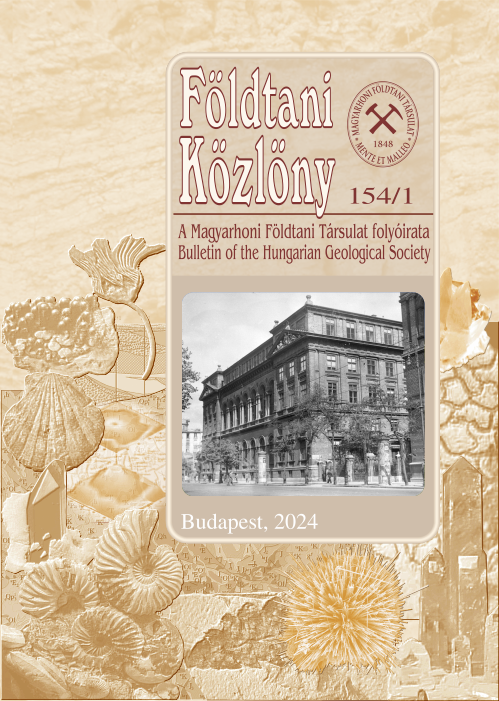Complex structural evolution and thrust systems in the Henc Valley near Szőlősardó (Aggtelek–Rudabánya Hills)
Abstract
This paper presents the results of the geological mapping and structural geological analysis done in a small part of the Aggtelek–Rudabánya Hills (Northern Hungary, Figure 1). As a result, cross-sections, a structural map and a geological
map were made and these illustrate the pre-Pannonian formations (Figures 2–4). The aim of the work was to understand the age and kinematics of the main tectonic boundaries and to create a comprehensive structural model for their
formation. A critical review of previous concepts is also given.
The area is located on the border of the Aggtelek and Rudabánya Hills and is significant for its complicated structures. A total of five structural units we distinguished as follows from top to bottom: Aggtelek nappe, Lászi, Henc, Szőlősardó
and Bódva units (Figure 4). Previous models have suggested contrasting interpretations of the Lászi Unit: either below, or above the Aggtelek (Silica) Unit, or as a megabreccia within the Darnó shear zone. The work presented in this paper
suggests that all the units were thrust on each other, first to the SE, then to the S. These movements correspond to the D1 and D2 phases of the structural evolution (Figure 7). They could have occurred around 90 Ma, based on the extrapolation
of geochronological data from the surrounding areas (KÖVÉR et al. 2009). This deformation could also have involved incipient salt tectonics near Alsótelekes, where Permian – lowermost Triassic gypsum and anhydrite form a dome
(ZELENKA et al. 2005); the latter arose from below the Szőlősardó unit. The D2 phase was particularly marked by a youngon-older (out-of-sequence) thrust which formed a duplex in the Henc unit (Figure 3, 10, 11). This type of deformation
could have completely rearranged the original nappe stacking and this makes its recognition difficult without carrying out a thorough sedimentological study of Triassic slope deposits. These deposits occur widely in the Lászi Unit, as
demonstrated in the Szőlősardó Szől–2 borehole and outcrops (Figures 5, 6).
SE vergent thrusts were reactivated in the early Miocene (before the late Ottnangian) during the D3 phase. The NW–SE compressional direction indicates that the Rudabánya Hills were probably not a positive flower structure at that time. On the
other hand, the subsequent D4 phase was a strike-slip event in the late Ottnangian to early Badenian. Left lateral slip could have reactivated earlier thrust planes and contributed to the final shaping of the Alsótelekes gypsum dome. The final D5 phase resulted in normal or oblique-normal faults (Figures 8d, 9) which affected the late Miocene (Pannonian) sediments.











